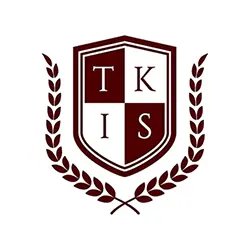So, we’ve all been there: the classic dilemma of trying to get that one mathematical concept across in an online setting. The virtual world can sometimes feel disconnected, a maze of pixels and data where teaching something as tangible as math seems almost… abstract? But, not all hope is lost! Some techniques and strategies can make online math instruction not only efficient but also super engaging. Let’s dive in and find out can you get a scholarship from online school.
Math in Motion: Use of Animated Graphics
Animated graphics aren’t just for those binge-worthy Saturday morning cartoons. Imagine introducing the concept of fractions with pizzas getting divided on-screen or teaching geometry through moving shapes. It’s a whole lot of fun and offers clarity like no other method. It’s like being in a math amusement park but without the long queues.

Interactive Platforms: The True MVPs
Here’s an idea: instead of merely explaining, why not have students interact with math problems? Platforms today offer interactive math puzzles and challenges. A quadratic equation isn’t just something to solve; it’s a quest, an adventure. And trust me, nothing beats the joy on a student’s face when they conquer a particularly challenging math quest!
The Power of Storytelling in Math
Remember those word problems we used to get in our math textbooks? Now, level that up. Introduce a problem within the context of a story. Maybe Jack didn’t just climb a beanstalk; perhaps he climbed it at a certain angle and speed. How long did it take him? Suddenly, trigonometry doesn’t seem that boring anymore!
DIY Kits: Hand’s On, Even When Online
While we’re navigating the digital world, who said we can’t get physical? Encourage students to use everyday objects as DIY math kits. Counting beans, measuring the length of their pencils, or even using their sandwich to understand fractions – the possibilities are endless, and the kitchen might just be the new math classroom.
Collaborative Whiteboards: Let’s Solve Together!
Teaching online doesn’t mean solo journeys. Platforms today offer collaborative whiteboards where students can solve problems together in real-time. It promotes teamwork and offers a diverse perspective on approaching a single problem. Plus, it’s always fun to watch kids argue whether the answer is 5 or 6!
Gamifying Math: Leaderboards and Challenges
If there’s one thing almost all kids love, it’s games. Transform math problems into challenges, introduce point systems, and display leaderboards. A little competition can spark enthusiasm. And who knows math might just become their new favorite game!
Pop Culture Integration: When Math Met Harry Potter
Did you know that you can teach probability with the ‘Sorting Hat’ from Harry Potter? Or explain complex calculations using popular movie plots? When math intertwines with pop culture, it feels less like a lesson and more like a fun trivia session.

Feedback Loops: Immediate Gratification or Instant Clarification
With online teaching, the turnaround time for feedback can be swift. Correct answers can lead to virtual rewards, and mistakes can immediately be pointed out with suggestions on areas of improvement. It’s like having a GPS for math; if you take a wrong turn, it immediately guides you back.
Flexible Learning Paces: Customizing Math Trails
Remember the fast-forward button on our old music players? Online learning offers something similar. Kids who grasp concepts quickly can move ahead, while those who need a bit more time can revisit lessons without any pressure. It ensures everyone marches to the beat of their own drum, or should we say, counts at their own pace.
Scheduling Breaks: The Power of Absorption
Dense math topics can sometimes feel like trying to drink water from a fire hose. Solution? Schedule short breaks during lessons. Maybe a quick 2-minute stretching activity or a fun math joke session. It’s essential to give time for information to sink in.
Real-world Contexts: Make Math Relatable
The power of context cannot be overstated. Introducing math concepts through real-world situations not only enhances understanding but also showcases the relevance of math in everyday life. Take for example the concept of percentages. Instead of sticking to textbook problems, ask them how much they would save during a 30% off sale on their favourite video game or toy. Or for older students, discussing interests in savings accounts can make compound interest much more engaging. interfacing math to this present reality, it turns out to be less of a theoretical idea and to a greater extent a valuable device.
Guest Sessions: Inviting Math Enthusiasts
There’s no monopoly on enthusiasm. ringing in visitor speakers, similar to math devotees or experts who use math in their professions, can be a distinct advantage. An architect can make sense of the calculation behind the plan of a renowned structure, or a coder can present the rationale that goes behind making apps. These sessions can inspire students by showing them the diverse avenues where math plays a crucial role.

Visual Mnemonics: Creating Memorable Math Moments
Human brains are wired to remember visuals more efficiently than plain text. Why not leverage that? Visual mnemonics, which are essentially memory aids using pictures, can be highly effective. For instance, to explain the concept of angles, use images like a slightly opened book for acute angles or a superhero cape for obtuse angles. These quirky visuals can make abstract math concepts memorable and easier to grasp.
Embracing Mistakes: The Learning Curve
It’s crucial to remind students that making errors in math isn’t a dead end; it’s just a part of the winding path towards understanding. Highlighting famous mathematicians who initially made mistakes or faced numerous rejections can be a great morale booster. It’s a gentle reminder that every error is a step forward, a learning opportunity. In an online environment, where personal face-to-face encouragement is limited, creating a culture of positive reinforcement around mistakes can make a world of difference.
Let’s sum it up, pun intended! Teaching math online doesn’t have to be a dreary task. With a pinch of creativity, a dash of technology, and heaps of enthusiasm, math can transform from being a feared monster to a friendly pet. The virtual world offers tools and opportunities that can make math lessons engaging, interactive, and downright fun. So, the next time you log in to teach math, remember, you’re not just a teacher; you’re a math magician, ready to cast your spell!




